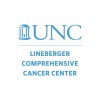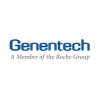
Study of Radiolabeled Monoclonal Antibody Anti-B1 for the Treatment of B-Cell Lymphomas and Extended...
LymphomaNon-HodgkinPhase I/II, single-center, dose-escalation study of the safety, pharmacokinetics, dosimetry, and efficacy of TST/I-131 TST for the treatment of patients with chemotherapy-refractory or resistant low-grade, intermediate-grade, or high-grade B-cell lymphoma. Subjects received 1 to 3 dosimetric doses followed by a therapeutic dose of TST/I-131 TST. Study BEX104526 was a follow-up study of the long-term safety and efficacy data from the surviving patients who completed at least 2 years of follow-up following administration of TST/I 131 TST on Study BEX104728. Dosimetric dose: Subjects received 1 to 3 dosimetric doses of TST/I-131 TST, followed by a therapeutic dose of TST/I-131 TST. Subjects received various doses of unlabeled TST (0, 95 or 475 mg) to determine the dose of unlabeled TST that optimized the radiation dose delivered to the tumor by TST/I-131 TST. The unlabeled TST was followed by 5 milliCurie (mCi) of I-131 TST. Serial whole body sodium iodide scintillation probe counts were obtained daily, for at least 5 days, in order to determine the rate of whole body clearance of radioactivity (residence time). The residence time was used to determine the radioactive clearance for the subject and the activity (in mCi) of I-131 required to deliver the desired TBD of radiation during the therapeutic dose. Because 475 mg was determined to be the optimal pre-dose of TST in the first subjects entered, the last 34 subjects received a single dosimetric dose that was preceded by an infusion of 475 mg of TST. Therapeutic dose: Groups of 3-6 subjects were enrolled at successively higher whole-body radiation dose levels beginning at a total body dose (TBD) of 25 centiGray (cGy). The TBD of each subsequent dose level was escalated by 10 cGy. Subjects who had undergone bone marrow transplantation (BMT) underwent a separate dose escalation (10 cGy TBD increase per dose level) beginning at a TBD level of 65 cGy. The MTD was defined as the highest dose level at which 0/3 or 1/6 subjects experienced dose-limiting toxicity (DLT). DLT was defined as follows: Any Grade 4 hematologic toxicity (National Cancer Institute [NCI] criteria) lasting greater than 7 days, or Any Grade 3 hematologic toxicity lasting greater than 2 weeks, or Any Grade 3 or 4 nonhematologic toxicity Redosing. Subjects who achieved tumor regression were considered for re-dosing, using the original therapeutic dose of TST/I-131 TST, at the time the tumor was no longer shrinking in an attempt to upgrade their response. Retreatment. Subjects who achieved partial (PR) or complete response (CR) were considered for retreatment following relapse of their NHL, if progression occurred ≥6 weeks following the therapeutic dose. The original therapeutic dose of TST/I-131 TST was given unless a grade 2 or greater toxicity had been encountered, in which case a reduced dose was administered for the repeat therapeutic dose.

Gemcitabine and Bendamustine in Patients With Relapsed or Refractory Hodgkin's Lymphoma
Adult Lymphocyte Depletion Hodgkin LymphomaAdult Lymphocyte Predominant Hodgkin Lymphoma4 moreThis phase I/II trial studies the side effects and best dose of bendamustine hydrochloride when given together with gemcitabine hydrochloride and to see how well it works in treating patients with relapsed or refractory Hodgkin lymphoma. Drugs used in chemotherapy, such as gemcitabine hydrochloride and bendamustine hydrochloride, work in different ways to stop the growth of cancer cells, either by killing the cells or by stopping them from dividing. Giving more than one drug, combination chemotherapy, may kill more cancer cells.

Study of Inotuzumab Ozogamicin + Temsirolimus in Patients With Relapsed or Refractory CD22+ B-cell...
B-cell Lymphoma RefractoryThis is an open label phase I study of Inotuzumab Ozogamicin, an antibody-targeted intravenous chemotherapy agent composed of a CD22-targeted antibody linked to calicheamicin, in combination with the mammalian target of rapamycin (mTOR) inhibitor Temsirolimus, in patients with relapsed/refractory CD22+ B-cell non Hodgkin's lymphomas (NHLs). Both Inotuzumab Ozogamicin and Temsirolimus have been evaluated as single agents as well as in combination with rituximab in patients with NHLs. This is the first study combining the two agents together. In the present study Inotuzumab Ozogamicin will be administered intravenously on d1 at the starting dose of 0.8 /m2. Temsirolimus will be administered intravenously on days 1,8,15 and 22 at the starting dose of 15mg. Cycles will be repeated every 28 days.

Y Zevalin and BEAM in Autologous Stem Cell Transplantation (ASCT) for Lymphoma
LymphomaThe goal of this clinical research study is to see if high-dose chemotherapy (BEAM) and rituximab, given together with the new drug 90Y Zevalin, followed by a transplant of blood or marrow stem cells is safe. Another goal is to learn if this treatment can help decrease the chances of the cancer coming back.

The Combination of Rad001 and Rituximab In Patients With Non-hodgkin's Lymphomas
Non-Hodgkin's LymphomasThis study is an open label, multicenter study with two phases: Phase I is a dose escalation study of RAD001 in combination with one injection of Rituximab 375 mg/m² per week during 4 weeks (28 days) in patients CD20 positive non-Hodgkin's lymphomas to determine the dose limiting toxicities (DLTs) and maximum tolerated dose (MTD). The purpose of the study is to assess the feasibility of the combination based on - rate of dose limiting toxicities (DLT) and PK drug-drug interaction (DDI). Phase II will define the efficacy and safety profile of RAD001 and Rituximab combination at the RP2D in patients with lymphomas. Patients with lymphomas will be treated at the RP2D established during phase I and evaluated for clinical benefit rate, comprising complete responses (CR + CRu), partial responses (PR) and stable disease (SD), and time to progression using the IWG criteria for treatment response. Induction therapy will follow the same schedule than during the phase I study. Maintenance therapy: Monthly cycles for up to 2 years with: Daily RAD001 at the same dose than during induction therapy. Rituximab infusion every other cycle at 375 mg/m2 that correspond to the usual maintenance schedule for Rituximab. Response to therapy will be assessed between day 42 and day 49, then every two months.

Intralesional Rituximab for the Treatment of Conjunctival Indolent Lymphoma
Ocular Adnexal Mucosa-Associated Lymphoid Tissue LymphomaPhase II, monocentric, open label study to assess safety and activity of intralesional Rituximab for the treatment of indolent CD20+ lymphoma of conjunctiva.

A Phase 3 Trial of Brentuximab Vedotin(SGN-35) Versus Physician's Choice (Methotrexate or Bexarotene)...
Primary Cutaneous Anaplastic Large Cell LymphomaMycosis Fungoides1 moreThe purpose of this study is to determine objective response rate (ORR), lasting at least 4 months (ORR4), with brentuximab vedotin in participants with cluster of differentiation antigen 30 positive (CD30+) cutaneous T-cell lymphoma [mycosis fungoides (MF) and primary cutaneous anaplastic large cell lymphoma (pcALCL) ]compared to that achieved with therapy in the control arm.

Induction Chemo w/ABVD Followed by Brentuximab Vedotin Consolidation in Newly Diagnosed, Non-Bulky...
Hodgkin LymphomaAdultThe standard chemotherapy for Hodgkin lymphoma is called ABVD which is a combination of 4 chemotherapy drugs (doxorubicin, bleomycin, vinblastine, and dacarbazine). The number of cycles of ABVD chemotherapy Hodgkin lymphoma patients receive is about 4-6 cycles. In addition to the ABVD chemotherapy, patients with Hodgkin lymphoma will routinely receive radiation therapy. The use of chemotherapy and radiation may cause long term treatment related side effects such as heart problems and other cancers. Researchers are trying to find if combining ABVD chemotherapy with new drugs and reducing the number of ABVD chemotherapy cycles given is just as effective as the standard Hodgkin treatment. Brentuximab vedotin is approved by the United States Food and Drug administration (FDA) for the treatment of Hodgkin lymphoma that has come back (relapsed). For this research study, the use of brentuximab vedotin in newly diagnosed Hodgkin lymphoma is considered investigational. Brentuximab vedotin is an antibody that also has a chemotherapy drug attached to it. Antibodies are proteins that are part of your immune system. They can stick to and attack specific targets on cells. The antibody part of the brentuximab vedotin sticks to a target called cluster of differentiation antigen 30 (CD30). CD30 is an important molecule on some cancer cells and some normal cells of the immune system. The purpose of this research study is to see the effects of treatment with fewer cycles of the combination chemotherapy, ABVD, followed by the study drug brentuximab vedotin has on study participants and Hodgkins lymphoma.

A Study of GDC-0575 Alone and in Combination With Gemcitabine in Participants With Refractory Solid...
LymphomaSolid TumorThis open-label, multicenter, Phase I, dose-escalation study will evaluate the safety, tolerability, and pharmacokinetics (PK) of GDC-0575 administered alone or in combination with gemcitabine in participants with refractory solid tumors or lymphoma. In Stage 1, cohorts of participants will receive multiple ascending oral doses of GDC-0575 alone or in combination with intravenous gemcitabine. In Stage 2, participants will receive GDC-0575 orally in combination with intravenous gemcitabine at or below the maximum tolerated dose determined in Stage 1. Anticipated time on study treatment is until disease progression or unacceptable toxicity occurs, up to approximately 5 years.

Carbohydrate Metabolism Disorder Frequency in Hypertriglyceridemia Induced by Bexarotene of Cutaneous...
HypertriglyceridemiaCutaneous T Cell LymphomaBexarotene is a RXR-selective retinoid, licensed for the treatment of cutaneous T cell lymphoma. The most frequent adverse effect is hypertriglyceridemia but its mechanism is not well known. The purpose of this study is to research a carbohydrate metabolism disorder associated in bexarotene-induced hypertriglyceridemia.
